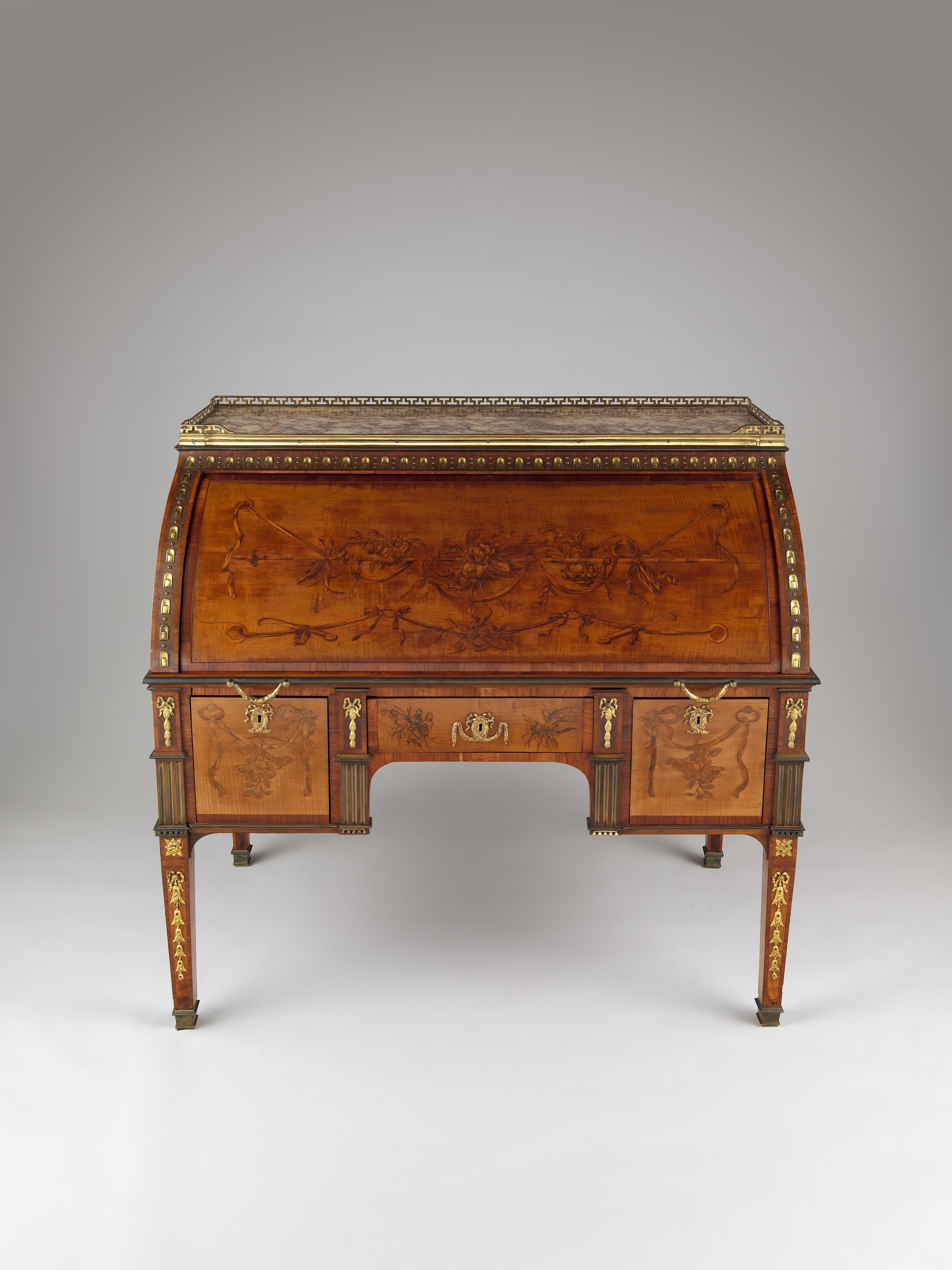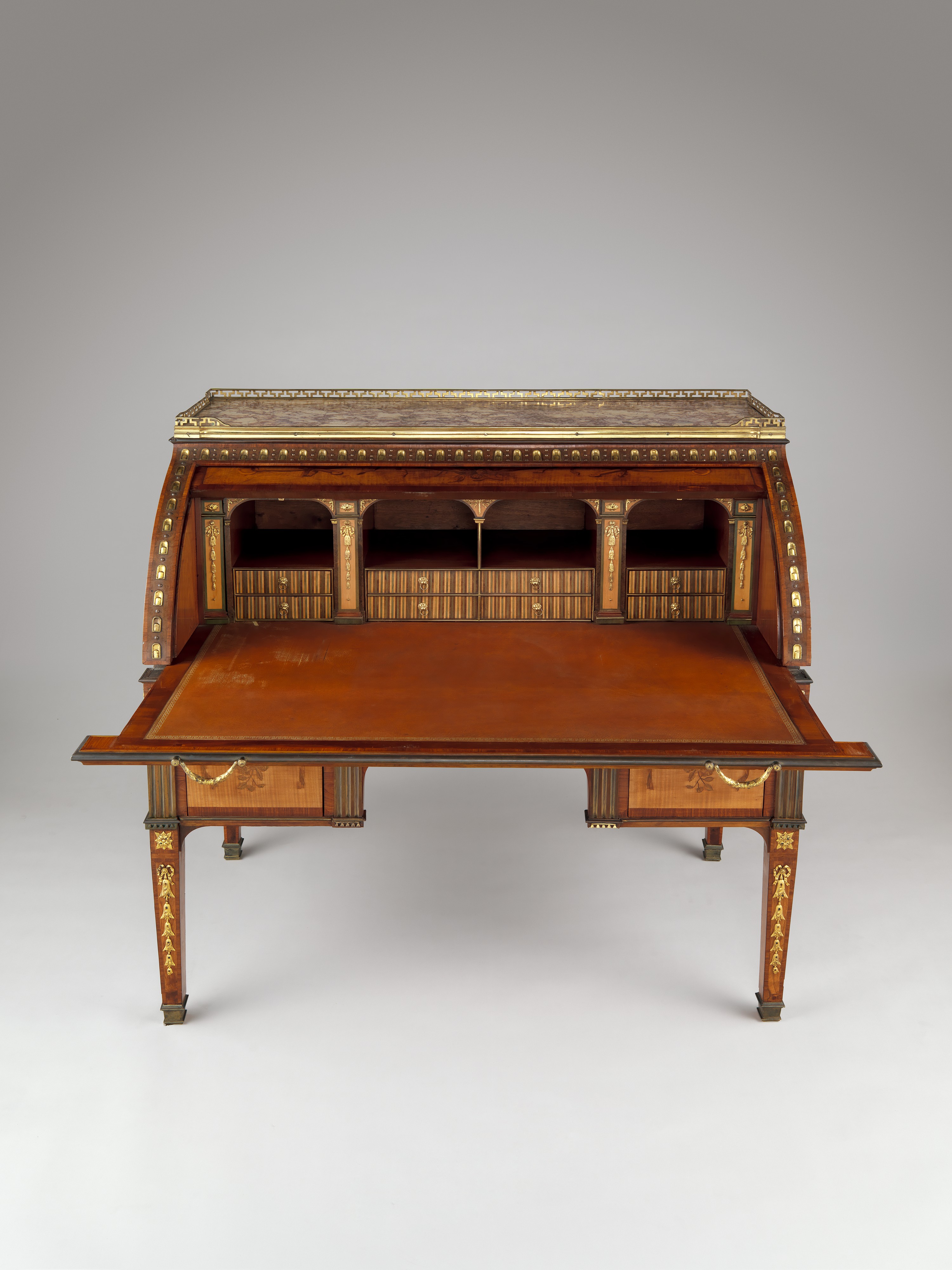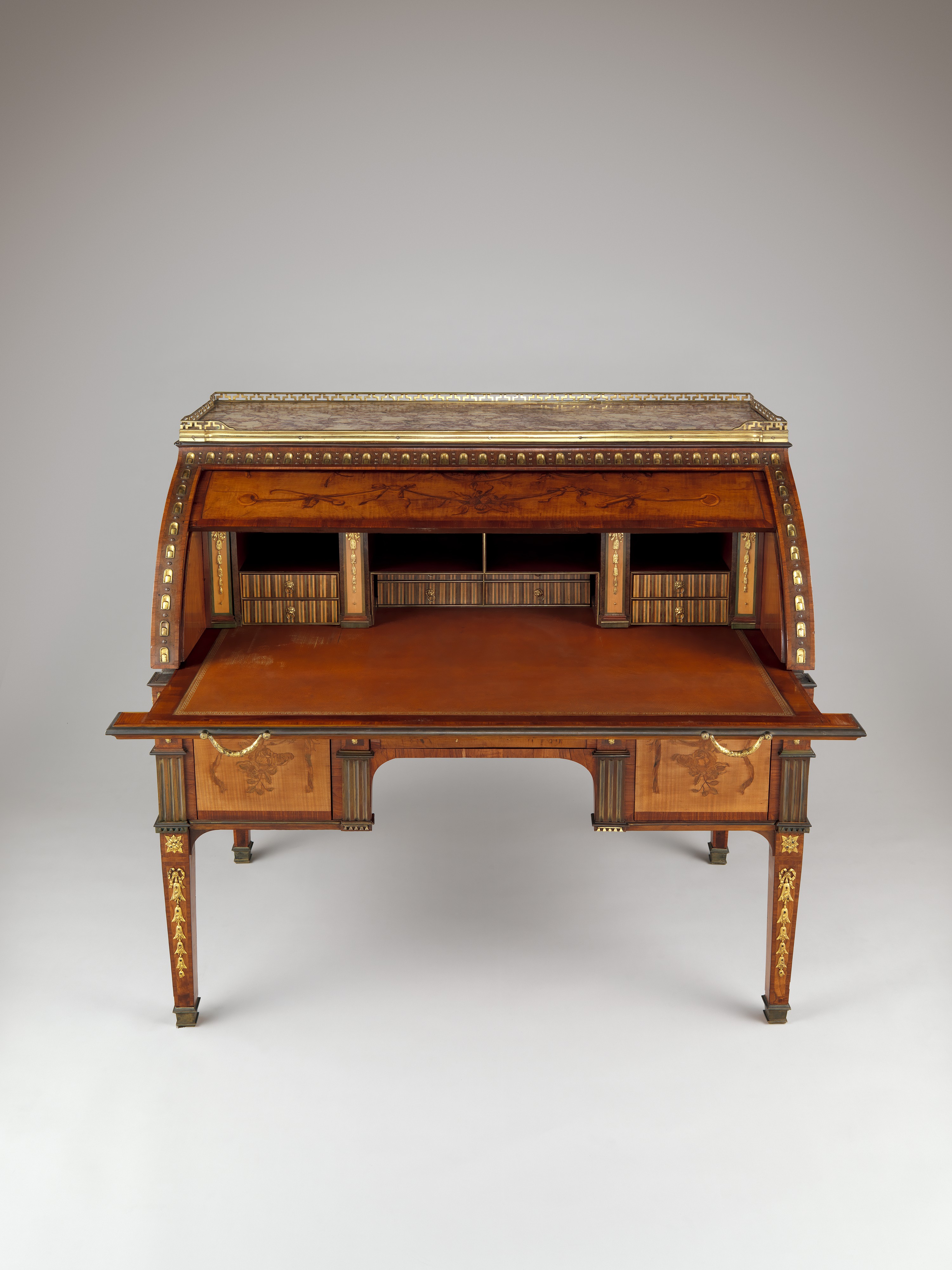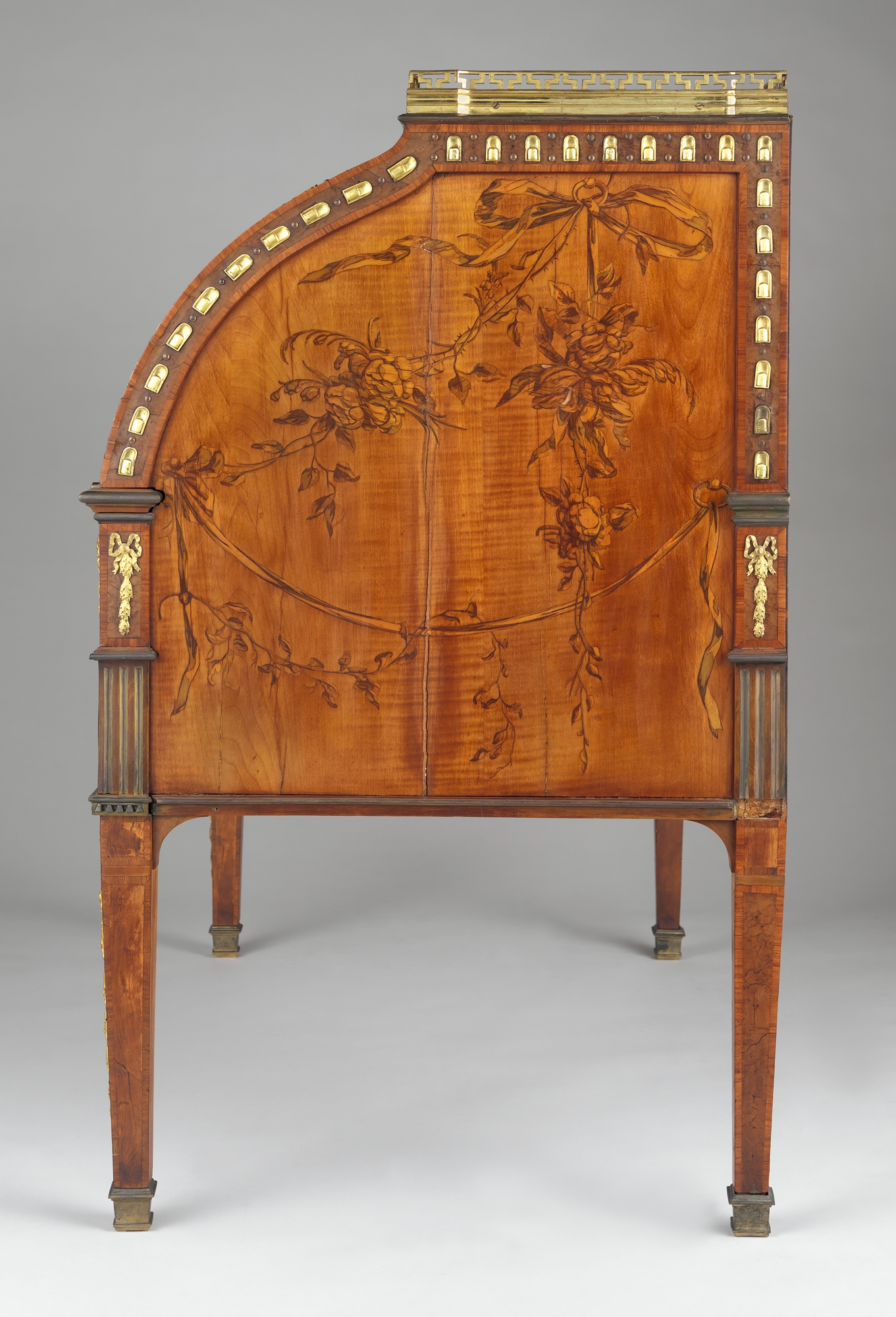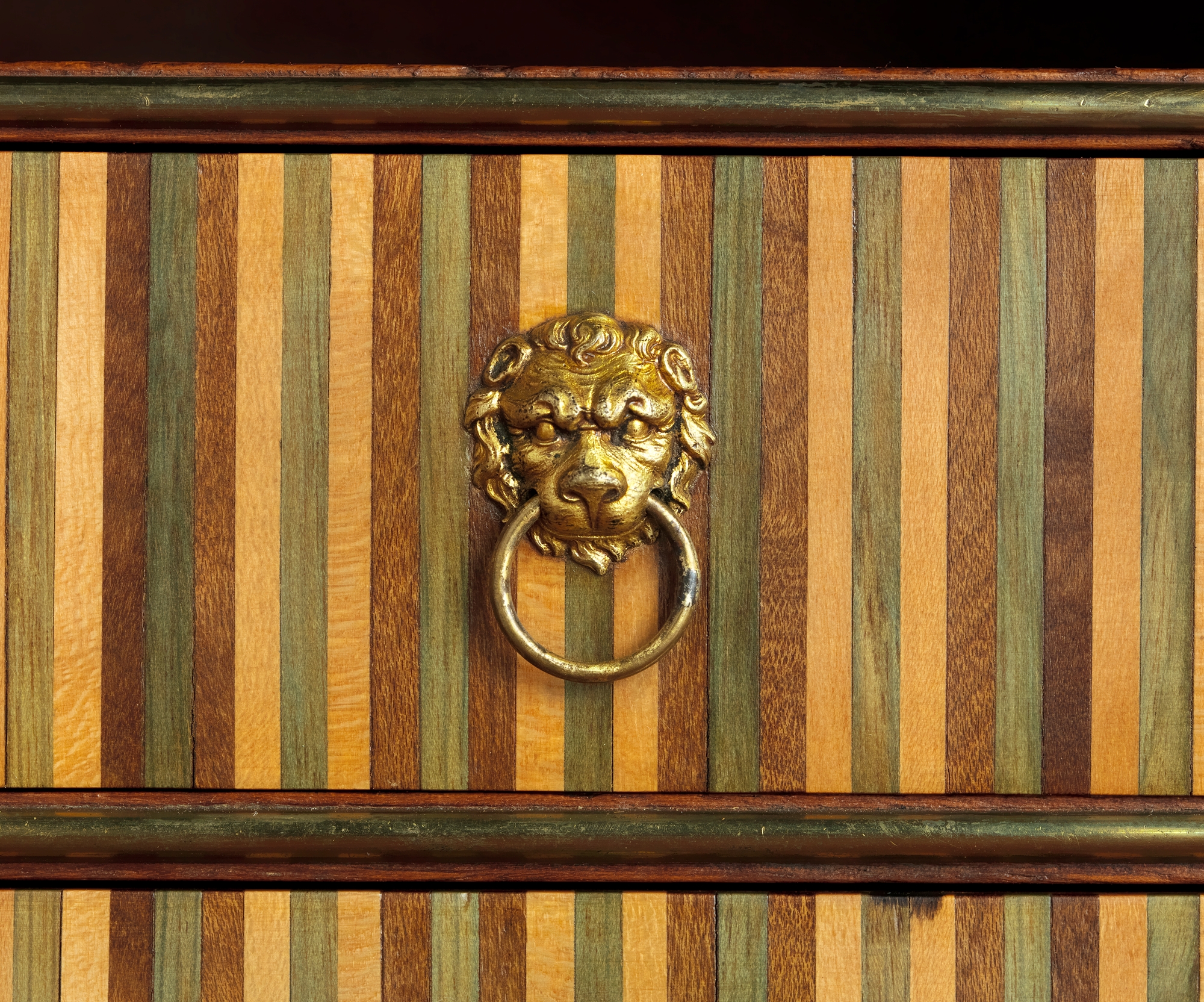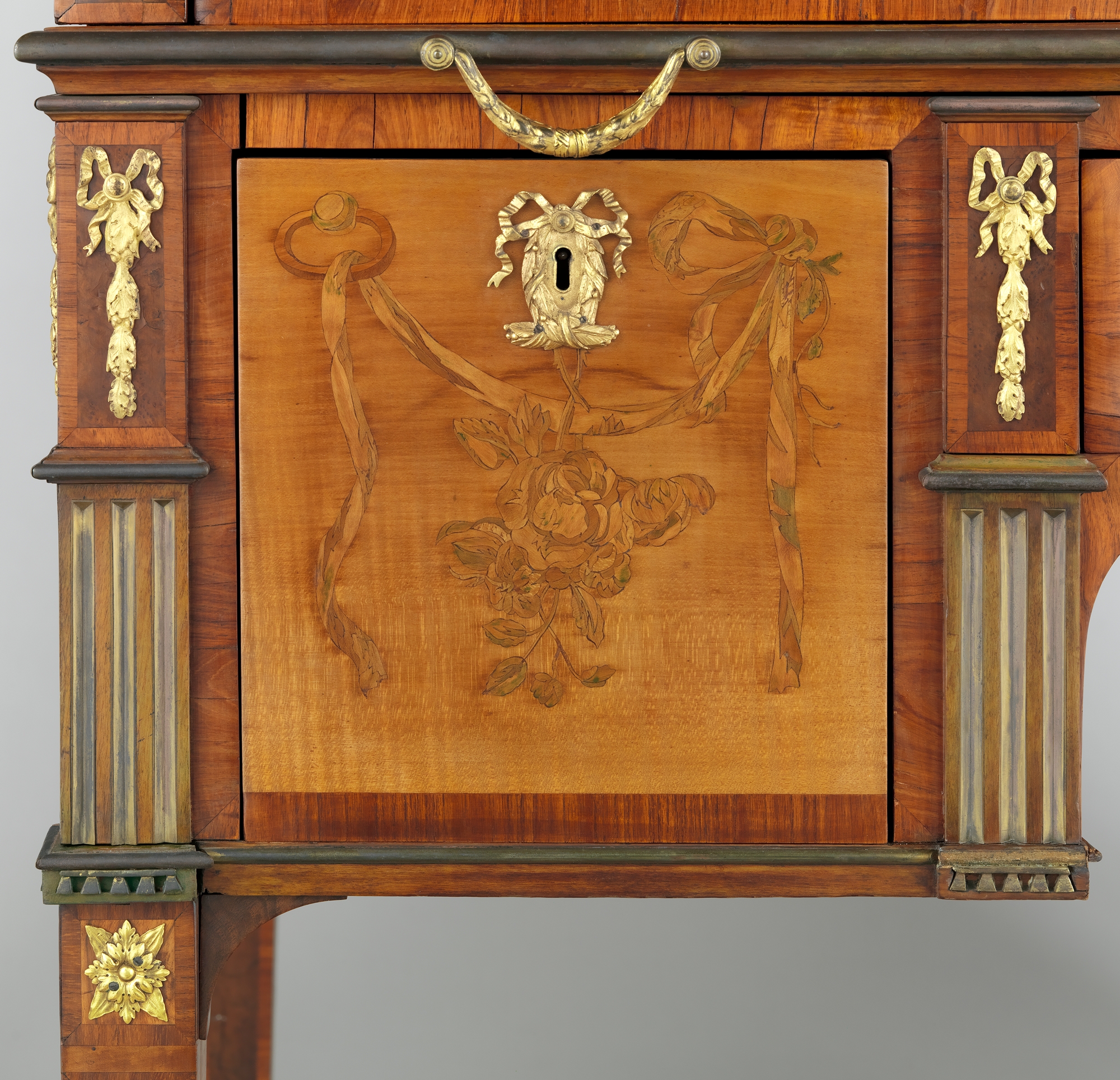Rolltop desk
David Roentgen German
Not on view
The Roentgen manufactory was particularly well known for its rolltop writing desks with four, six, or even eight legs, distinguished in the 1770s by the accomplished marquetry á la mosaïque (also known as “painting in wood”) and gilt-bronze mounts that decorated their exteriors. The marquetry motif on this example, which occurs elsewhere on Roentgen furniture, depicts flower and leaf bouquets twined around a pointed planting tool along with ribbon-tied pruning knives. The juxtaposition of what is probably a seeder or hoe with the pruning knives and bouquets constructs a narrative for the flowers that follows them from planting to harvest. The architectural interior of the desk contains pigeonholes and drawers, with fronts in striped tulipwood stained green and brown and handles shaped like lion masks holding small gilded rings. This desk was damaged, requiring major repairs. The front legs, originally detachable, are stationary replacements that cannot be unscrewed. Both lower side drawers are also replaced, with floral marquetry on the drawer fronts that is not by David Roentgen or by any master in his workshop. The desk may have been forced open, causing irreparable damage to the veneer and surfaces, the locks and inner spring mechanisms, the body of the drawers themselves, and even the front legs. It is a testament to Roentgen’s unmatched skill that the desk and its complicated locks were so difficult to penetrate as to cause such damage and that the later restorer could not replicate his advanced designs.
Due to rights restrictions, this image cannot be enlarged, viewed at full screen, or downloaded.
This artwork is meant to be viewed from right to left. Scroll left to view more.


